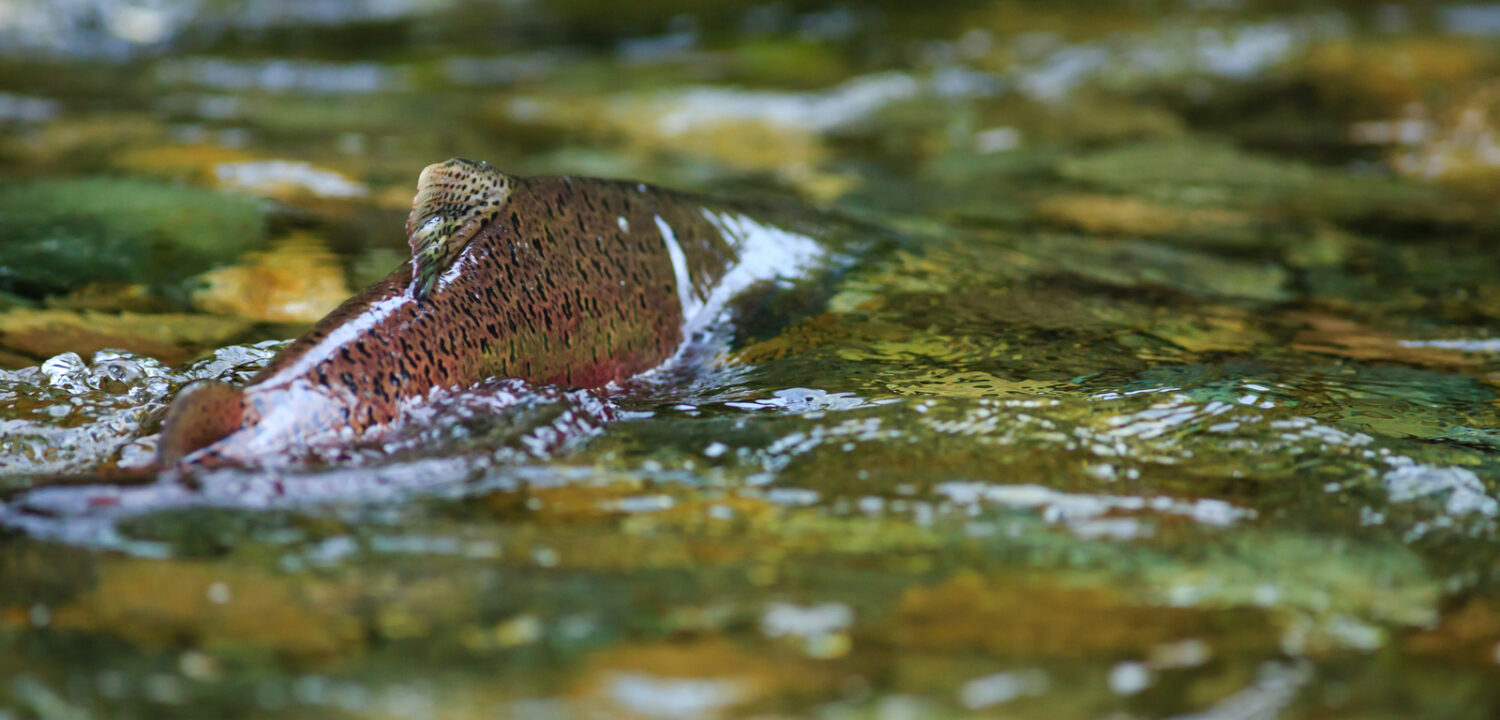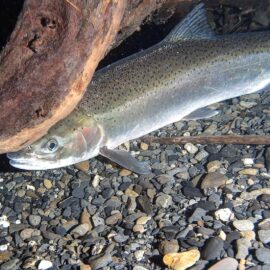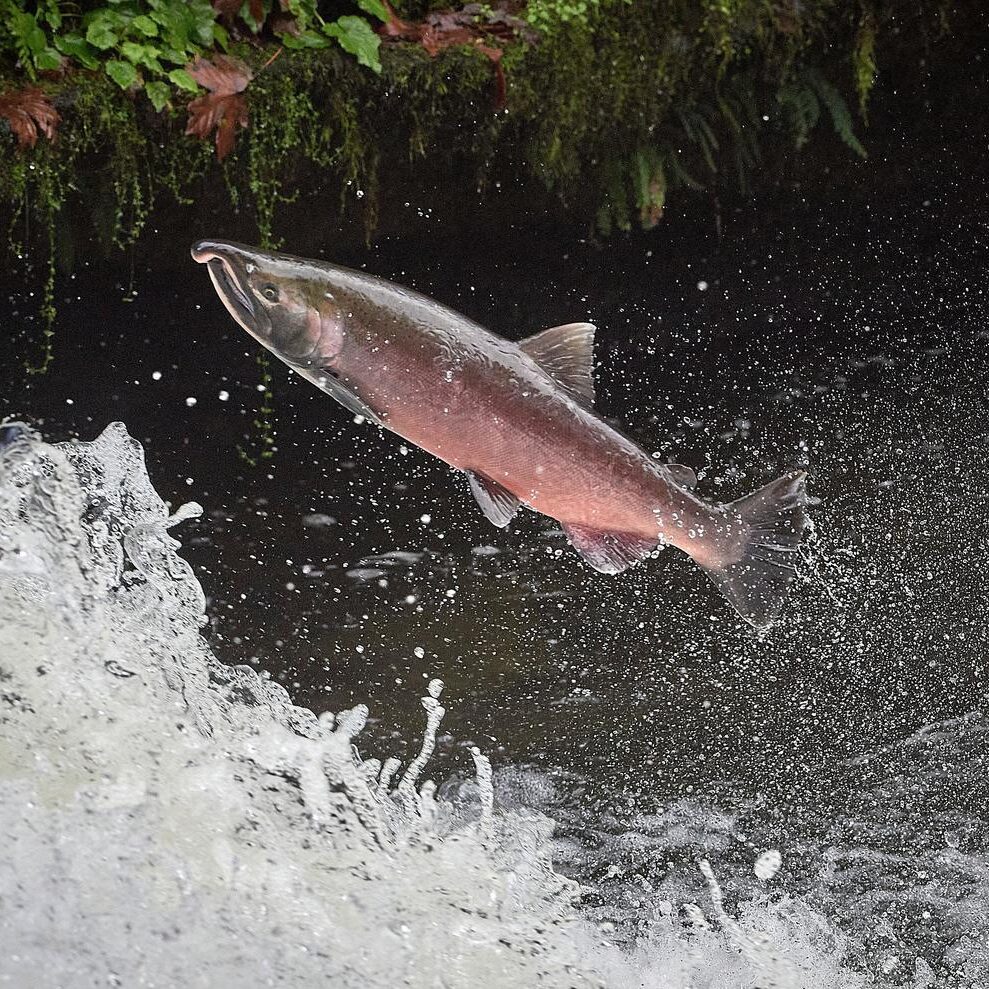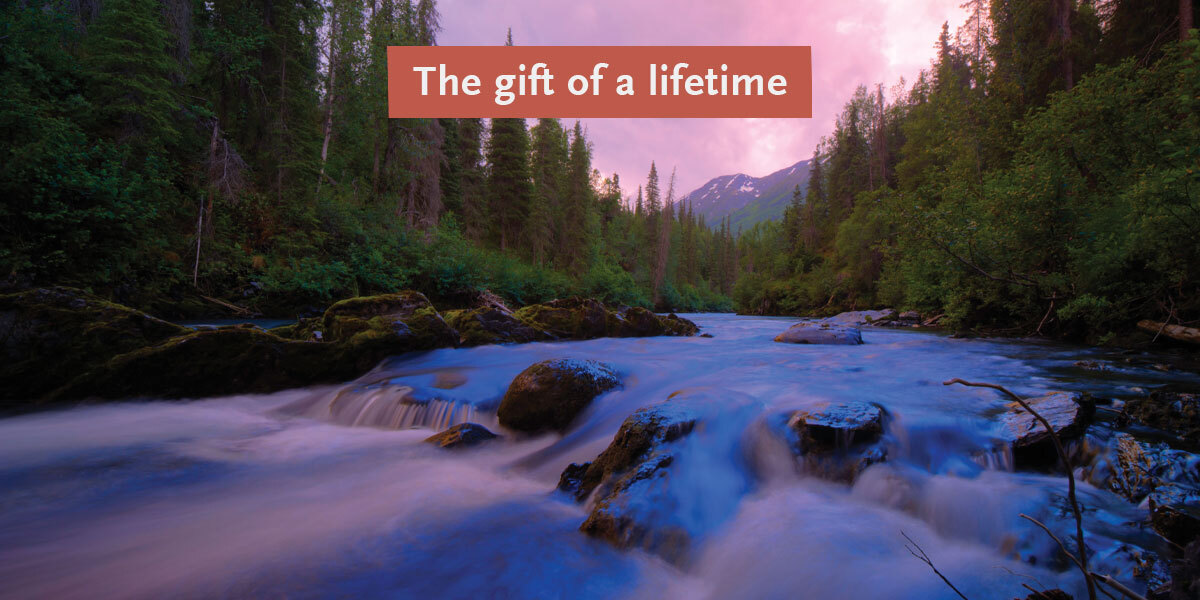Bad years, like 2024, signal more than short-term pain for some wild fish runs. That’s why we’re willing to keep our flies dry this season.
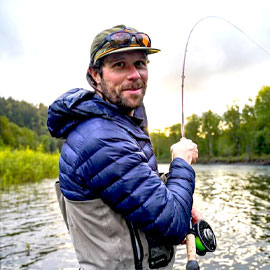
Kirk Blaine’s home river system is the Umpqua, on Oregon’s South Coast. This is where, years ago, he fell in love with fly fishing for steelhead. But his relationship with fall Chinook—another wild fish prized by anglers—started two watersheds south.
“My first time fishing for fall Chinook was running flashers and plug cut herring on the Coquille River,” remembers Blaine, Wild Salmon Center’s Oregon Senior Wild Fish Manager. “Sadly, that’s no longer an option.”
For the past three years, fall Chinook fishing on the Coquille has been closed due to its low wild Chinook abundance. Now, Blaine fears that the Umpqua Basin is on a similar trajectory. On the Coquille, fall Chinook decline is linked to multiple limiting factors. Many of these factors, including encroachment by invasive smallmouth and striped bass, also impact the Umpqua. And its fall Chinook runs are showing the strain.
“Some years, we still might see more than 11,000 fall Chinook in the Umpqua,” Blaine says. “But then there are also years like last year, where the warning signs are just flashing red.”
“Some years, we still might see more than 11,000 fall Chinook in the Umpqua. Then there are years where the warning signs are just flashing red.”
WSC Oregon Senior Wild Fish Manager Kirk Blaine
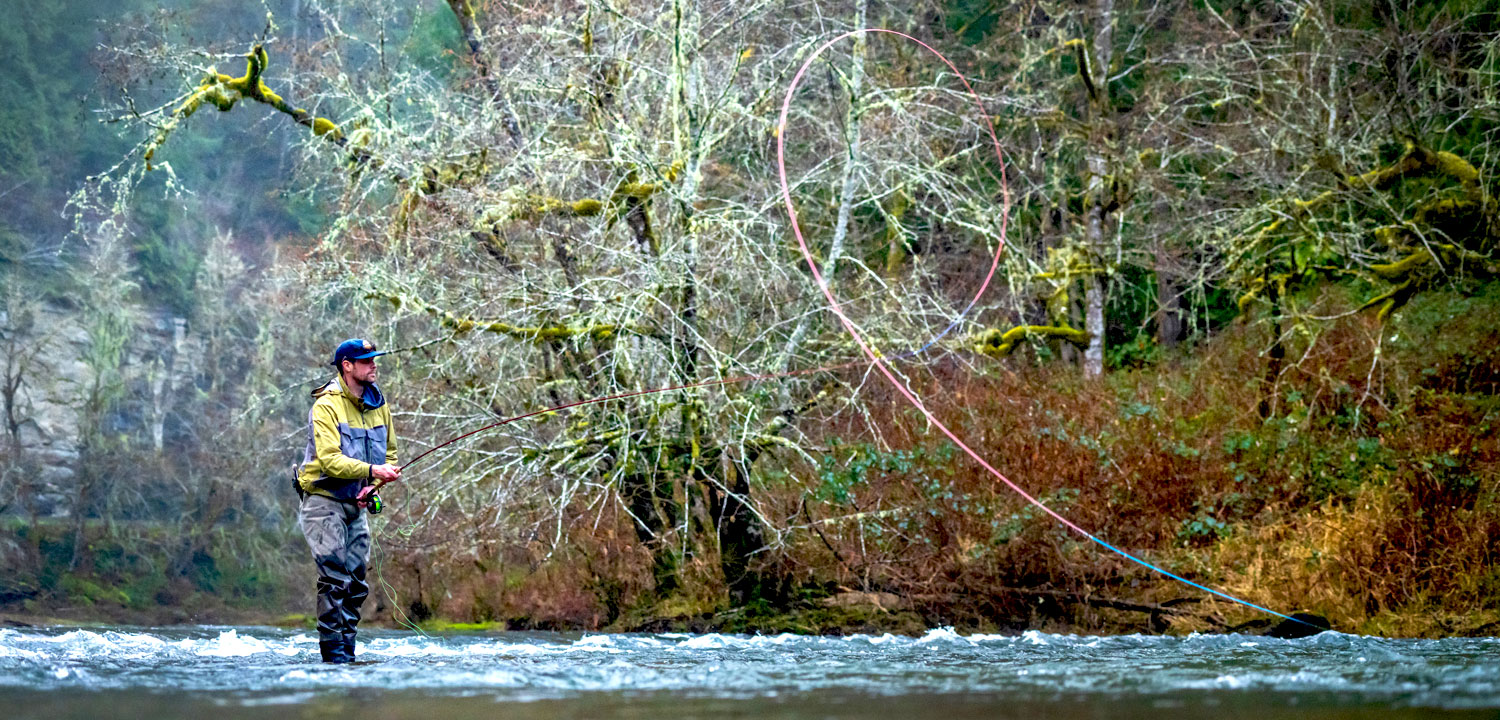
In 2024, fall Chinook returning to the Umpqua numbered just 1,318, according to the Oregon Department of Fish and Wildlife: an all-time low for the basin since ODFW started monitoring Chinook populations in 1980.
In rivers across Oregon, native wild fish runs face mounting challenges: from the rise of nonnative predator species like smallmouth bass to the harmful effects of climate change and commercial fishing pressure on Chinook from fleets off the coasts of Alaska, British Columbia, and Washington. On the Umpqua, Blaine says, last year’s startling numbers mean we can’t keep fishing as usual—not if we want to protect future fishing opportunities in this river system.
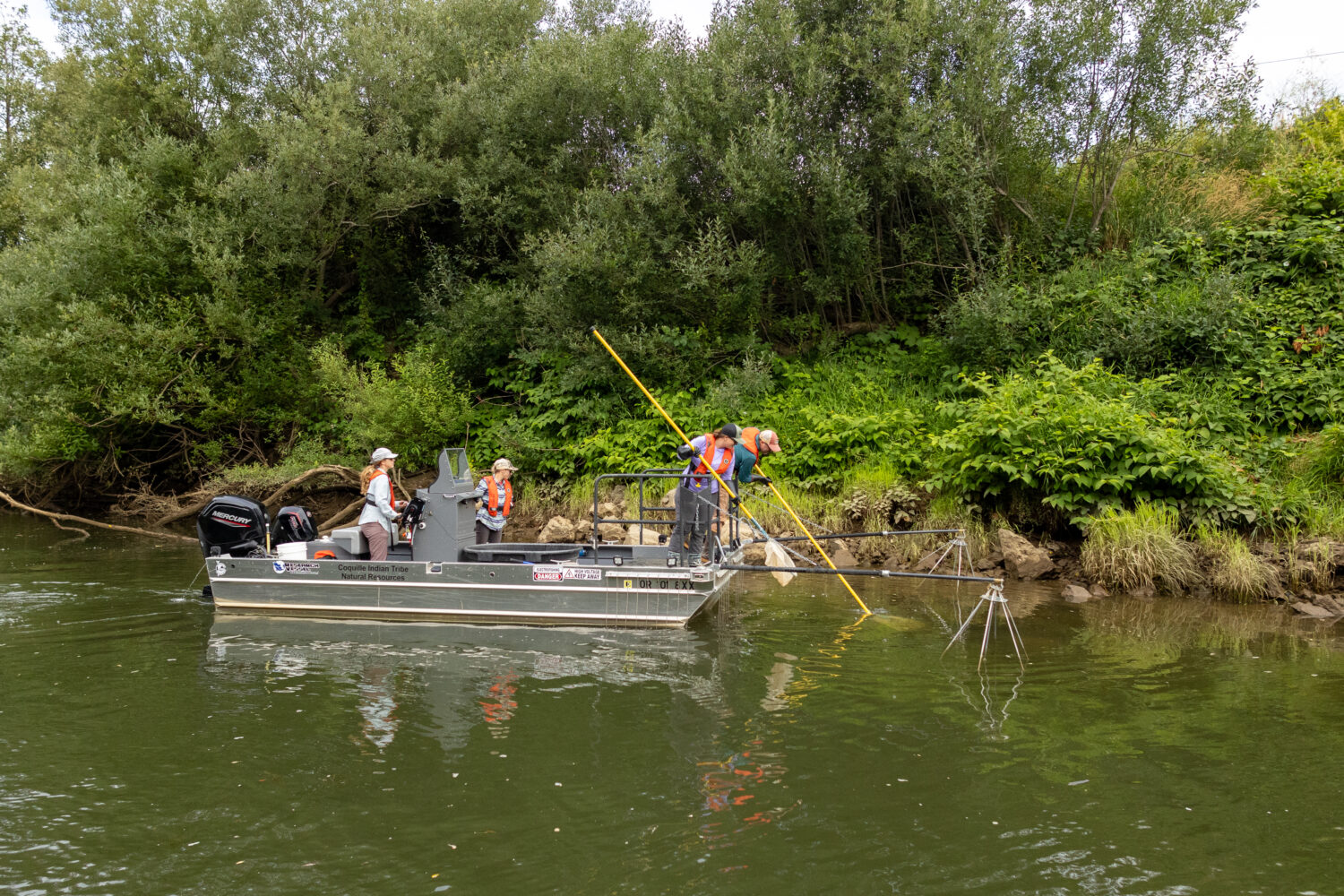
On June 13, the ODFW Commissioners responded with a decision to cap 2025’s fall Chinook harvest on the Umpqua at 500 fish, and limit fishing days to Tuesdays, Thursdays, and Saturdays. While ODFW is largely maintaining regular season regulations for most other coastal watersheds—in hopes that returns will be more robust than forecasted for the Umpqua—other exceptions include the Nehalem River, where commissioners are reducing harvest to one fall Chinook a day and two a year.
“Fall Chinook harvest opportunities will be limited this year, and that comes with costs to fishing guides and other local businesses,” Blaine says. “But ultimately, the state is taking steps for a more resilient future for these fish and the communities that rely on them.”

Targeted escapement goals set by fisheries managers walk a delicate line: aiming to provide fishing opportunities now while also ensuring that enough adult fish reach spawning grounds to sustain future generations. ODFW forecasts for 2025 predict that just under 5,000 fall Chinook will return to the Umpqua Basin. But Blaine notes that these forecasts can overshoot the numbers that actually return later in summer and early fall—as was the case in 2024. ODFW’s more precautionary escapement goals for 2025, he says, aim to head off the kind of catastrophic decline in abundance from which these wild fish can’t recover.
“Fall Chinook have long been one of the strongest wild salmon populations on the Oregon Coast,” Blaine says. “But until we return to abundance levels on par with even the last decade, they remain vulnerable.”
“Fall Chinook have long been one of the strongest wild salmon populations on the Oregon Coast. But until we return to abundance levels on par with even the last decade, they remain vulnerable.”
WSC Oregon Senior Wild Fish Manager Kirk Blaine
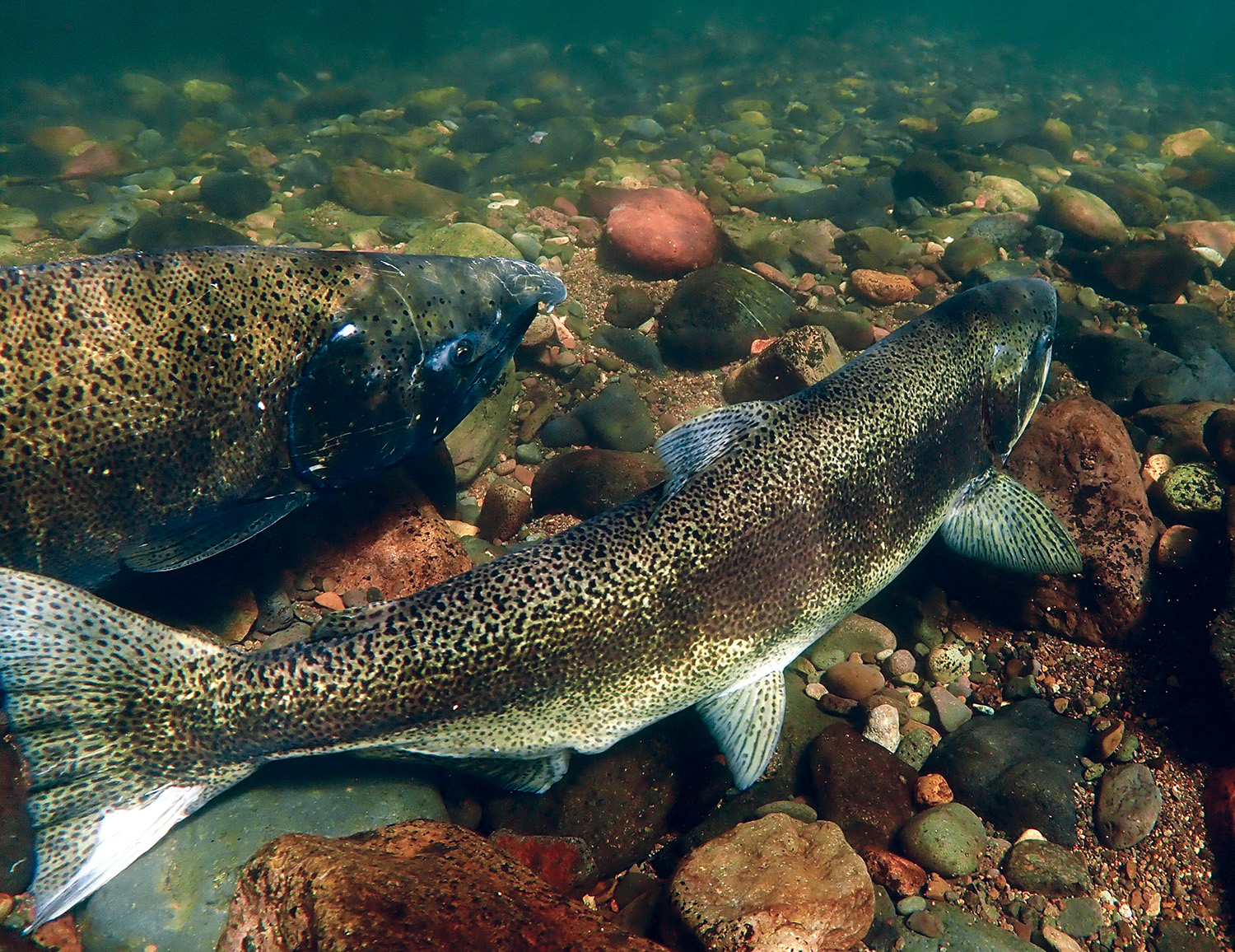
According to Blaine, the most immediate lever we can pull is to let more wild fish return to spawning grounds to boost future generations—as ODFW’s new rules aim to do. We can also support ongoing efforts to restore salmon habitat, reduce encroachment by nonnative invasive species, and improve freshwater quality and quantity in coastal watersheds from the South Umpqua to the North Coast: work that is boosting Oregon Coast coho salmon populations. And we can do more to balance recreational fishing opportunities for fall Chinook with commercial harvest.
Ultimately, Blaine says, what’s needed is a shift away from emergency rules and towards the kind of proactive, long-term planning that can finally move the needle for these struggling wild fish runs. By collaborating with ODFW staff, the ODFW Commission, Tribal nations, and other local stakeholders, he’s confident that we can build solutions that work both for fish and for the coastal communities and anglers who cherish them.
“Now is the time to invest in the future of vulnerable Oregon salmon rivers like the Umpqua, the Elk, and the Sixes,” Blaine says. “What we do now can help ensure that decades from now, these salmon rivers, and the communities that rely upon them, will still be thriving.”
“What we do now can help ensure that decades from now, salmon rivers and the communities that rely upon them will still be thriving.”
WSC Oregon Senior Wild Fish Manager Kirk Blaine
